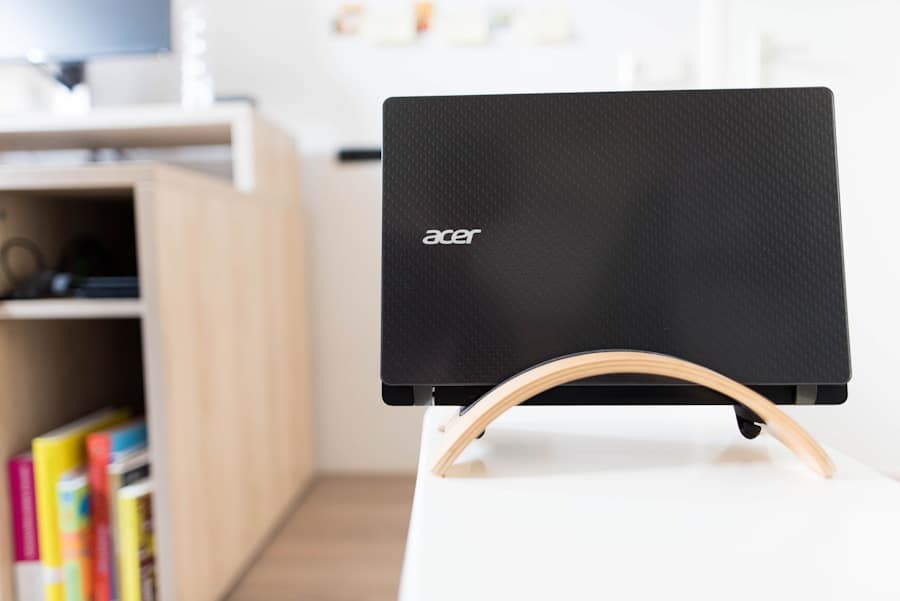In an era where connectivity is paramount, the demand for robust home Wi-Fi solutions has surged, particularly in larger living spaces. A home Wi-Fi router serves as the backbone of a household’s internet connectivity, enabling everything from streaming high-definition content to supporting smart home devices. However, the challenge of providing reliable coverage across expansive areas can be daunting.
Large homes often present unique obstacles, such as thick walls, multiple floors, and various obstructions that can interfere with signal strength. As a result, selecting the right router becomes crucial for ensuring seamless connectivity throughout the entire space. The evolution of technology has led to the development of advanced routers specifically designed to cater to larger areas.
These devices not only enhance signal strength but also improve overall network performance. With features like mesh networking, dual-band capabilities, and advanced security protocols, modern routers are equipped to handle the demands of multiple users and devices simultaneously. Understanding the intricacies of these routers is essential for homeowners looking to optimize their internet experience in larger environments.
Key Takeaways
- A home Wi-Fi router for large spaces is essential for ensuring strong and reliable internet connectivity throughout the entire area.
- When choosing a home Wi-Fi router for large spaces, factors to consider include the size of the space, the number of devices that will be connected, and the internet usage habits of the residents.
- Top features to look for in home Wi-Fi routers for large spaces include dual-band or tri-band technology, high-speed connectivity, advanced security features, and the ability to support multiple devices simultaneously.
- When comparing the best home Wi-Fi routers for large spaces, consider factors such as range, speed, ease of setup, and overall performance.
- Pros of top home Wi-Fi routers for large spaces include wide coverage, fast speeds, and advanced features, while cons may include higher price points and complex setup processes.
Factors to Consider When Choosing a Home Wi-Fi Router for Large Spaces
When selecting a home Wi-Fi router for a large space, several critical factors must be taken into account to ensure optimal performance. One of the foremost considerations is the size and layout of the area that requires coverage. A router’s range is typically measured in square feet, and understanding the dimensions of your home can help in choosing a device that meets your needs.
For instance, a single-story home may require a different router than a multi-level residence due to the varying distances the signal must travel. Another significant factor is the number of devices that will be connected to the network. In today’s digital age, households often have numerous devices vying for bandwidth, including smartphones, tablets, laptops, smart TVs, and IoT devices.
Routers with higher throughput capabilities can manage multiple connections more effectively, reducing lag and improving overall user experience. Additionally, considering the types of activities that will be performed on these devices—such as gaming, streaming, or video conferencing—can influence the choice of router, as some models are better suited for high-bandwidth tasks than others.
Top Features to Look for in Home Wi-Fi Routers for Large Spaces
When evaluating home Wi-Fi routers for large spaces, certain features stand out as essential for ensuring comprehensive coverage and reliable performance. One such feature is mesh networking capability. Mesh routers consist of multiple units that work together to create a unified network, eliminating dead zones and providing consistent coverage throughout the home.
This system is particularly beneficial in larger spaces where a single router may struggle to reach distant corners. Another important feature is dual-band or tri-band technology. Dual-band routers operate on both 2.4 GHz and 5 GHz frequencies, allowing users to connect devices based on their specific needs.
The 2.
Tri-band routers take this a step further by adding an additional 5 GHz band, which can help distribute traffic more evenly among connected devices, reducing congestion and improving performance during peak usage times. Security features are also paramount when selecting a router for a large space.
With an increasing number of connected devices comes an elevated risk of cyber threats. Look for routers that offer robust security protocols such as WPA3 encryption, automatic firmware updates, and built-in firewalls. These features help protect your network from unauthorized access and ensure that your personal information remains secure.
Comparison of the Best Home Wi-Fi Routers for Large Spaces
Several routers stand out in the market when it comes to providing reliable coverage in large spaces. The Netgear Orbi RBK852 is a prime example of a high-performance mesh system designed for expansive homes. With its tri-band technology and impressive coverage area of up to 5,000 square feet, it can easily handle multiple devices without sacrificing speed.
The Orbi also supports Wi-Fi 6, which enhances performance in environments with numerous connected devices. Another noteworthy option is the ASUS RT-AX88U, which combines powerful hardware with advanced features tailored for large spaces. This dual-band router offers extensive coverage and supports up to 8 simultaneous connections through its eight LAN ports.
Its AiMesh technology allows users to create a mesh network with other compatible ASUS routers, further extending coverage as needed. The TP-Link Deco X60 is another strong contender in the mesh router category. It provides excellent coverage with its dual-band capabilities and supports Wi-Fi 6 technology for faster speeds and improved efficiency.
The Deco X60 is particularly user-friendly, featuring an intuitive app that simplifies setup and management while offering robust parental controls and security features.
Pros and Cons of the Top Home Wi-Fi Routers for Large Spaces
Each router designed for large spaces comes with its own set of advantages and disadvantages that potential buyers should consider before making a decision. The Netgear Orbi RBK852, for instance, boasts exceptional speed and coverage but comes at a premium price point that may not be suitable for all budgets. Additionally, while its tri-band technology is advantageous for managing multiple devices, it may be overkill for smaller households with fewer connected gadgets.
The ASUS RT-AX88U offers impressive performance and versatility with its extensive port options and AiMesh capability. However, some users may find its setup process slightly more complex compared to simpler models. Furthermore, while it excels in speed and range, it may not provide the same level of seamless connectivity as dedicated mesh systems in particularly large or multi-story homes.
On the other hand, the TP-Link Deco X60 presents an excellent balance between performance and affordability. Its user-friendly app makes setup straightforward, and its security features are commendable. However, some users have reported that its performance can diminish when faced with numerous high-bandwidth activities simultaneously, which could be a concern for households with heavy internet usage.
Tips for Setting Up and Optimizing a Home Wi-Fi Router for Large Spaces
Setting up a home Wi-Fi router effectively is crucial for maximizing its performance in large spaces. One of the first steps is to choose an optimal location for the router itself. Ideally, it should be placed in a central area of the home to ensure even distribution of the signal.
Avoid placing the router near walls or obstructions that could impede signal strength; instead, consider elevating it on a shelf or mounting it on a wall if possible. Once the router is positioned correctly, configuring its settings can further enhance performance. Changing the default SSID (network name) and password not only improves security but also helps in easily identifying your network among others in the vicinity.
Additionally, enabling Quality of Service (QoS) settings can prioritize bandwidth allocation for specific devices or applications that require higher speeds, such as gaming consoles or streaming services. Regularly updating firmware is another essential practice for maintaining optimal performance. Manufacturers frequently release updates that address security vulnerabilities and improve functionality.
Most modern routers offer automatic update options; however, checking manually from time to time ensures that your device is running on the latest software version.
Customer Reviews and Recommendations for Home Wi-Fi Routers for Large Spaces
Customer reviews play a vital role in understanding real-world performance and satisfaction levels associated with various home Wi-Fi routers designed for large spaces. Many users praise the Netgear Orbi RBK852 for its exceptional range and speed, particularly in multi-story homes where previous routers struggled to provide consistent coverage. Users often highlight its ability to handle multiple devices simultaneously without noticeable lag during streaming or gaming sessions.
Conversely, some customers have expressed concerns regarding its price point, suggesting that while it offers premium features, it may not be necessary for smaller households or those with less demanding internet needs. Similarly, reviews for the ASUS RT-AX88U often commend its robust performance and extensive connectivity options but note that initial setup can be somewhat challenging for those unfamiliar with networking equipment. The TP-Link Deco X60 has garnered positive feedback for its ease of use and affordability while still delivering solid performance in larger spaces.
Many users appreciate its intuitive app interface that simplifies network management and parental controls. However, some reviews indicate that under heavy load conditions—such as multiple users streaming high-definition content simultaneously—the performance may not match that of higher-end models like the Orbi RBK852.
Choosing the Best Home Wi-Fi Router for Your Large Space
Selecting the right home Wi-Fi router for large spaces involves careful consideration of various factors including coverage area, device capacity, and specific features tailored to your needs. By understanding these elements and evaluating top contenders in the market—such as the Netgear Orbi RBK852, ASUS RT-AX88U, and TP-Link Deco X60—homeowners can make informed decisions that enhance their internet experience. Ultimately, investing in a quality router designed for larger areas can significantly improve connectivity throughout your home, allowing you to enjoy seamless streaming, gaming, and smart home integration without interruption.
Whether you prioritize speed, ease of use, or advanced features like mesh networking or security protocols will guide you toward finding the perfect solution tailored to your unique living space.
This article discusses the latest developments in online retail and how businesses are adapting to meet the changing needs of consumers. Check it out here for more information.
FAQs
What are the best home Wi-Fi routers for large spaces?
Some of the best home Wi-Fi routers for large spaces include the Netgear Orbi, Asus RT-AX88U, TP-Link Archer C4000, and Linksys EA9500.
What features should I look for in a Wi-Fi router for large spaces?
When choosing a Wi-Fi router for large spaces, look for features such as dual or tri-band technology, MU-MIMO support, beamforming, and a high number of antennas for better coverage.
How do I know if a Wi-Fi router is suitable for a large space?
You can determine if a Wi-Fi router is suitable for a large space by checking its coverage area, number of antennas, and the technology it uses to extend the Wi-Fi signal.
What is the average price range for Wi-Fi routers for large spaces?
The average price range for Wi-Fi routers for large spaces is between $150 to $400, depending on the brand, features, and technology.
Are there any specific brands known for producing Wi-Fi routers for large spaces?
Yes, some brands known for producing Wi-Fi routers for large spaces include Netgear, Asus, TP-Link, and Linksys. These brands offer a range of routers designed to provide strong and reliable Wi-Fi coverage for large homes or spaces.



